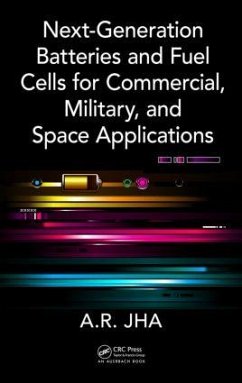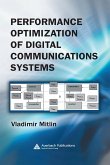Distilling complex theoretical physical concepts into an understandable technical framework, Next-Generation Batteries and Fuel Cells for Commercial, Military, and Space Applications describes primary and secondary (rechargeable) batteries for various commercial, military, spacecraft, and satellite applications for covert communications, surveillance, and reconnaissance missions. It emphasizes the cost, reliability, longevity, and safety of the next generation of high-capacity batteries for applications where high energy density, minimum weight and size, and reliability in harsh conditions are the principal performance requirements. Presenting cutting-edge battery design techniques backed by mathematical expressions and derivations wherever possible, the book supplies an authoritative account of emerging application requirements for small, lightweight, high-reliability rechargeable batteries-particularly for portable and implantable medical devices and diagnostic capsules. It devotes a chapter to fuel cells and describes the three distinct types of practical fuel cells, including those that use aqueous electrolytes, molten electrolytes, and solid electrolytes. Identifies critical performance parameters and limits of rechargeable batteries, including state of charge, depth of discharge, cycle life, discharge rate, and open-circuit voltage Provides a foundation in the basic laws of electrochemical kinetics Highlights performance capabilities of long-life, low-cost, rechargeable batteries, for particular applications in battlefield systems and unmanned aerial vehicles (UAVs ) A.R. Jha, author of 10 books on alternative energy and other topics, outlines rechargeable battery requirements for electric vehicles (EVs), hybrid electric vehicles (HEVs), and plug-in hybrid electric vehicles (PHEVs). He identifies the unique materials for electrolytes, cathodes, and anodes that are most cost-effective with significant improvements in weight, size, efficiency, reliability, safety, and longevity. Since electrode kinetics play a key role in the efficient operation of fuel cells, the book also provides you with a foundation in the basic laws of electrochemical kinetics.
Next-generation batteries have higher power density and higher energy density and can be put into new forms with lower-cost mass production. This book focuses on technologically advanced secondary (rechargeable) batteries in both large and small format. It covers advanced technologies as replacements for NiCd and NiMH, especially advanced lithium-ion batteries that make use of new electrode materials and electrolytes. The author discusses printable batteries and thin-film battery stacks as enablers of micropower applications as well as hybrid battery/fuel cell systems, which are emerging as complements to consumer electronics batteries.
Hinweis: Dieser Artikel kann nur an eine deutsche Lieferadresse ausgeliefert werden.
Next-generation batteries have higher power density and higher energy density and can be put into new forms with lower-cost mass production. This book focuses on technologically advanced secondary (rechargeable) batteries in both large and small format. It covers advanced technologies as replacements for NiCd and NiMH, especially advanced lithium-ion batteries that make use of new electrode materials and electrolytes. The author discusses printable batteries and thin-film battery stacks as enablers of micropower applications as well as hybrid battery/fuel cell systems, which are emerging as complements to consumer electronics batteries.
Hinweis: Dieser Artikel kann nur an eine deutsche Lieferadresse ausgeliefert werden.








